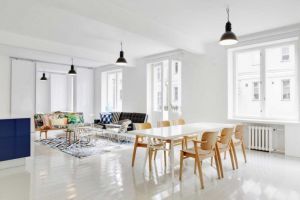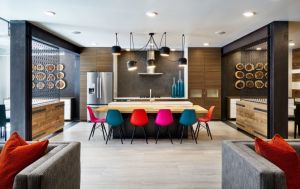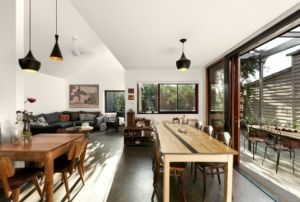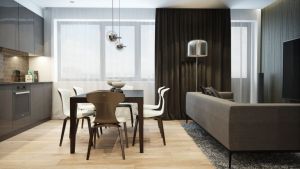The words “contemporary” and “modern” might have a similar meaning for most sectors, but not so in interior design. Here, they refer to two unique styles that are popular among designers and homeowners alike. They may share some elements from time to time, but are on the whole totally separate from each other!
What is “Modern” Interior Design?
Typically used to define the European design aesthetic that first emerged in the early 20th century, it’s also known as Mid-Century Modern. The main philosophy of this design style is a seamless blend of form and function, but with more of a focus on the latter.
The use of white, cream and other neutrals for walls and flooring keeps things simple, but a few pops of color may be used to accentuate the décor, which is usually minimal as well. Modern-style interior design is widely used to make small homes, apartments and offices seem more spacious, airy and uncluttered.
What is “Contemporary” Interior Design?
This term refers to any style that’s currently in vogue, which is why it’s often confused with modern interior design. For instance, using bare space and clean-lined furniture to “open up” a room (borrowed from modern design) is very trendy right now.
Contemporary design is always evolving, and elements from other design styles and eras tend to make an appearance quite often. Through most of recent history, however, there’s been particular emphasis on the marriage of comfort and convenience, paired with the rising importance of sustainability in design.
Differences between Modern and Contemporary Design
Modern Contemporary
clean lines and open, unadorned spaces Geometric lines and structural layouts


Greater focus on function than form Focus on comfortable and sustainable spaces


Minimal décor and accessories Strategic use of negative space with décor


Neutral colors and simple textures Neutrals paired with bold, unique accents


Asymmetrical balance in furniture Customized, one-of-a-kind furniture pieces



Pair “floating” cabinetry and fittings with bare walls and neutral colors to enhance the illusion of space in Modern-style bathrooms.

Combine natural wood flooring and airy glass enclosures with warm lighting to make Contemporary-style bathrooms feel both luxurious and inviting.

Plain geometric furnishings, subtle accent pieces and muted colors will add a sense of calm, simplicity and peace to Modern-style bedrooms.

The use of bold textures, linear furniture and bespoke lighting turns Contemporary-style bedrooms into comfortable, beautiful and restful spaces.

Use decorative lighting and wall art to add a hint of visual interest to bare seating and hardwood floors in Modern-style dining rooms.

Contrasting textures, bright colors and unique lighting will add an extra level of playfulness that’s perfectly on-trend for Contemporary-style dining rooms.

Polished lines, natural materials and concealed storage are the best way to capture the simplicity and charm of Modern-style kitchens.

Customized workspaces with a combination of decorative and task lighting turns Contemporary-style kitchens into exceptional structured spaces.

Clean lines, large windows, neutral colors and minimal adornment combine to make Modern-style living rooms both spacious and welcoming.

Plentiful natural light and neutral walls open up Contemporary-style living rooms, while bright, eclectic décor highlights their individuality.





